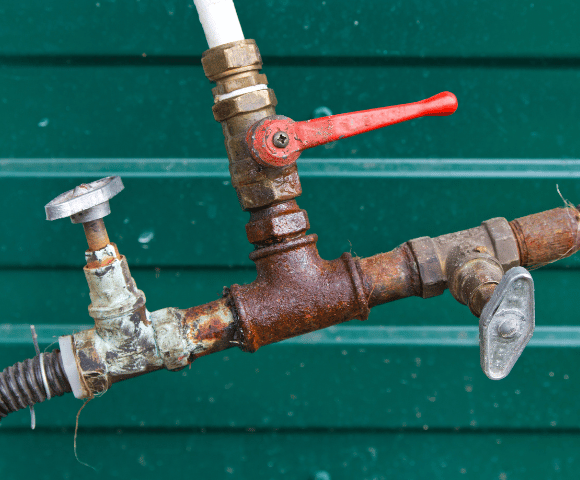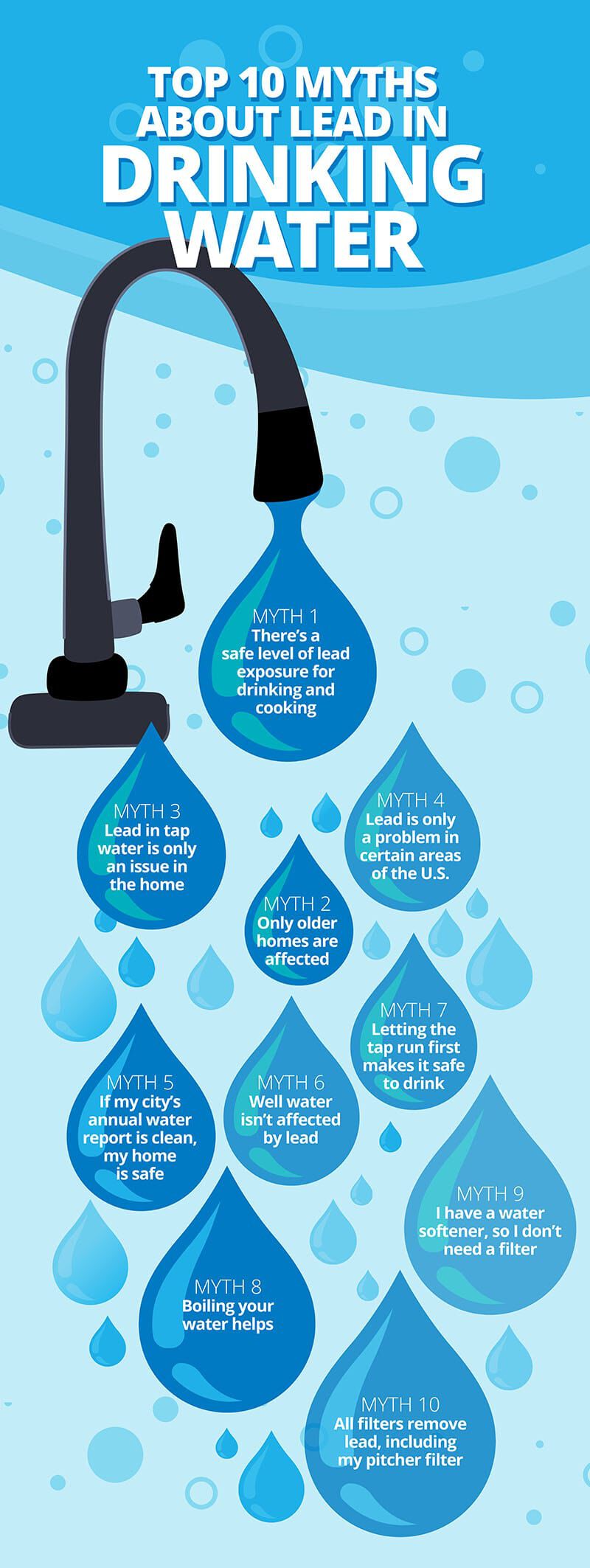Myth #1: There’s a safe level of lead exposure for drinking and cooking
The truth: While the federal limit set by the Environmental Protection Agency (EPA) of 15 parts per billion (ppb) was created to act as a trigger for water utility compliance, it was not meant as a health-based standard. The EPA has since set the maximum contaminant level goal for lead in drinking water at zero. Lead is a cumulative toxicant that affects multiple body systems, leading experts – including the World Health Organization – to widely agree that there is no safe limit of exposure for children or adults. This means that you should not drink, cook, or shower with lead contaminated tap water.
Myth #2: Only older homes are affected
The truth: It’s fairly well known, and confirmed by the CDC, that all houses built before 1978 are likely to contain some lead-based paint. However, according to the EPA, you also should assume that any building less than five years old has lead-contaminated water. Surprisingly, pipes in these newer homes are at an even greater risk for lead because of soldering used to join copper pipes. Mineral deposits eventually build up inside the pipes over time, insulating the water from the lead in the solder. Even though the use of lead in plumbing was banned in 1986, the “lead-free” plumbing parts that have been used ever since then still contain traces of it (legally allowed up to 0.2 percent in solders and flux and up to 8 percent in pipes and pipe fittings).
Myth #3: Lead in tap water in only an issue in the home
The truth: Public schools, daycares, churches, and water fountains across the nation are testing positive for lead-contaminated drinking water, some at exceedingly high levels. After state officials from Montana mandated schools test for lead, 74% of schools that submitted samples found at least one faucet or drinking fountain with high levels of lead. The issue isn’t isolated to a single state, as a 2023 report by Environment America Research & Policy Center found that 34 states received a grade of D or F for their policies pertaining to lead contamination of schools’ drinking water. With the increased danger of lead exposure for children, parents may want to consider sending their children to school with filtered water in a reusable bottle and discourage them from refilling at faucets that may contain lead contamination.
Myth #4: Lead is only a problem in certain areas of the United States
The truth: There are about 75 million homes across the country built before 1980, meaning they’re most likely to contain some lead plumbing. That’s more than half of the country’s housing units, according to the Census Bureau. Reuters recently identified 3,810 neighborhood areas across the country with recorded childhood lead poisoning rates at least double those found across Flint, Michigan, during the peak of the water contamination crisis between 2014-2015.
Myth #5: If my city’s annual water report is clean, my home is safe
The truth: Lead found in tap water usually comes from the corrosion of older fixtures (i.e., faucets) or from the solder that connects pipes. Lead levels vary in each home depending on that home’s pipes and plumbing fixtures. Even if a city’s water report passes lead testing, there could still be lead in a home’s metal water taps, interior water pipes, or the pipes connecting the house to the main water line. The only way to know for sure is to have your home tested.
Myth #6: Well water isn’t affected by lead
The truth: Private wells are the main source of drinking water for 15 percent of U.S. households (or 47.8 million people), yet only a few states require they be tested for lead. The people in these homes drink, bathe, and cook with water potentially containing dangerous amounts of lead. Private wells older than 20 years may contain lead in the “packer” element that is used to help seal the well above the well screen or leaded-brass components. Additionally, corrosion of pipes and fixture parts can cause the lead to enter tap water.

Myth #7: Letting the tap run first to make it safe to drink
The truth: Although “flushing” can, under certain circumstances, partly reduce lead-in-water contamination, it is not a safe or effective method for preventing exposure. In homes with lead service lines, it could actually increase the risk of exposure by bringing water to the faucet that has had prolonged contact with lead (especially if the flush is not long enough). Lead-leaching is unpredictable. According to the team of scientists responsible for uncovering the water crisis in Flint, “these hazards can be partly reduced by flushing, but can be eliminated by installation of lead filters or removal of lead plumbing.”
Myth #8: Boiling your water helps
The truth: Lead cannot be boiled out of drinking water, and heating or boiling water actually increases the concentration of lead making it more dangerous. Hot water is also more corrosive than cold water and causes lead to dissolve faster, which is why it’s important to not cook with lead-contaminated water and use a completely different source for mixing baby formula. Installing a water filtration system that is tested and certified to remove lead is the only effective way to remove lead from drinking and cooking water in your home.
Myth #9: I have a water softener, so I don’t need a filter
The truth: Unless combined with a water filtration system, water softeners are not effective at removing lead from tap water.
Myth #10: All water filters remove lead
The truth: Not all water filters are created equal. Many of the filters available today, including leading pitcher brands, are designed to only remove chlorine in order to improve taste and smell – not lead. When purchasing a filter to reduce lead, choose one that has been tested and certified to NSF/ANSI 53 and 58 for the reduction of lead. This will ensure that the filtration system has been tested to the national standards of lead reduction and has met the requirements of 150 parts per billion. Third party certifying organizations, such as WA and IAPMO, also test to NSF Standards for lead.
All drinking water filter systems from Aquasana reduce up to 99 percent of lead, including the Clean Water Machine and SmartFlow® Reverse Osmosis. If you’re interested in reducing lead throughout your entire home, the powerful OptimH2O® system uses advanced technology to filter down to 0.5 microns to reduce 99 percent of lead, as well as cysts, PFOA/PFOS, chlorine, and chloramines.





